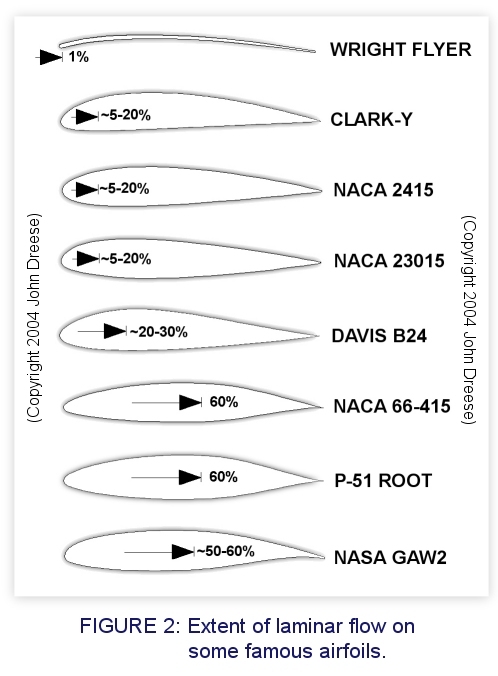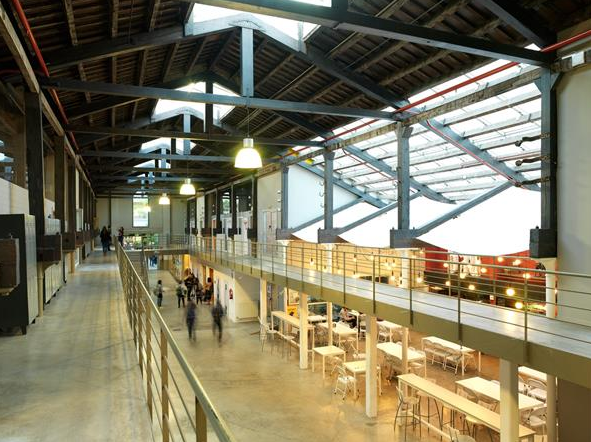Discuss lesson objectives 2. The difference is that the canard actually creates lift and holds the nose up as opposed to the aft-tail design which exerts downward force on the tail to prevent the nose from rotating downward. airfoil design characteristics lesson plan.
Airfoil Design Characteristics Lesson Plan, I am trying to relate a typical airfoil that is curved on the top and flat on the bottom. I am trying to relate a typical airfoil that is curved on the top and flat on the bottom. As velocity increases pressure decreases.
 Basic Aerodynamics With A Lesson Ideas Inspire From ideas-inspire.com
Basic Aerodynamics With A Lesson Ideas Inspire From ideas-inspire.com
For example the four forces that act upon an airplane are drag lift thrust and weight. To discover how airplanes can be controlled with rudders ailerons and elevators. Explain how Newtons Laws of Motion relate to aircraft design 4.
Airfoil refers to the cross-sectional shape of a plane blade or sails wing.
Lesson Plan Assessment Cross-curricular AFL questions model Safety Notes Description. Aircraft axis are imaginary lines passing through the aircraft. Designed to help minimize a pilots workload trim systems aerodynamically. Engineering the Wright Way Lesson Plan 1 Engineering the Wright Way Lesson Plan Grades 6-8. Relate the Bernoulli Principle to airfoils and flight 5. Lift weight thrust and drag.
Another Article :

Often a wing design begins with the definition of several airfoil sections and then the entire geometry is modified based on its 3-dimensional characteristics. I am trying to relate a typical airfoil that is curved on the top and flat on the bottom. What is an airfoil. In effect the canard is an airfoil similar to the horizontal surface on a conventional aft-tail design. Primary and Secondary Flight Control Lesson Plan Notes Trim systems are used to relieve the pilot of the need to maintain constant pressure on the flight controls and usually consist of flight deck controls and small hinged devices attached to the trailing edge of one or more of the primary flight control surfaces. Momentum Model Technologies Airplane Crafts Model Airplanes Balsa Glider.

Engineering the Wright Way Lesson Plan 1 Engineering the Wright Way Lesson Plan Grades 6-8. A Few Basic Airfoil Types. Opposes weight in straight and level flight. Aircraft are designed with positive static stability to support dynamic stability. Engineering the Wright Way Lesson Plan 1 Engineering the Wright Way Lesson Plan Grades 6-8. 2d Airfoil Aerodynamics Ppt Video Online Download.

For example the four forces that act upon an airplane are drag lift thrust and weight. Note Clark Y is a common airfoil in the type of airfoil that is curved on the top and flat on the bottom. Relate the Bernoulli Principle to airfoils and flight 5. Describe the effects of relative wind on flight 6. Tests were conducted on seven airfoil models each having a 2286 cm chord and a 051m span six of the airfoils are either being used or considered for use on small wind turbine blades. Sea Gull Flying Boat Aircraft Flying Boat Aircraft Model Airplanes.

An Airfoil is a structure piece or body designed to obtain a useful reaction upon itself in its motion through the air. I am trying to relate a typical airfoil that is curved on the top and flat on the bottom. Ad Access the most comprehensive library of printable K-8 lesson plans. A Few Basic Airfoil Types. 4 forces of flight. Glider Template Balsa Glider Paper Glider Airplane Crafts.

Students revisit Bernoullis principle presented in lesson 1 of the Airplanes unit and learn how engineers use this principle to design airplane wings. Note Clark Y is a common airfoil in the type of airfoil that is curved on the top and flat on the bottom. This lesson is designed to teach students engineering skills using methods similar to those that made the Wright brothers pioneers of aviation. This is the first of four lessons exploring the four key forces in flight. Airfoil - Aerofoil An airfoil is a cross section of a wing. Airfoils And Simulation Ppt Download.

Each day the students will build something that flies progressing in their designs just as real flight progressed throughout history. 4 forces of flight. Force created by the effect of airflow as it passes over and under the wing. I am trying to relate a typical airfoil that is curved on the top and flat on the bottom. Thought of as pivot points. Aerodynamics And Theory Of Flight Forces Of Flight Lift Weight Thrust Drag Generating Lift Airfloils An Aerodynamics Aviation Education Angle Of Attack.

Ensures stability from wingtip to wingtip. Today we will start with the. Cambered Plate Airfoil terminology The Chord Line 1 is a straight 1 line connecting the leading and trailing edges of the airfoil. Describe the characteristics of angle of attack on flight Linked National Science Education. I am trying to relate a typical airfoil that is curved on the top and flat on the bottom. It Is The Cross Sectional Shape Of The Wing That Has Everything To Do With Lift Aviation Education Aviation Training Flight Training.

Describe airfoils and flight 3. Airfoils Pilot control of lift Weight Thrust Drag Ground effect Climbs Descents Turns Stalls Airfoil design characteristics Controllability and maneuverability Stability Turning tendencies Load factors and airplane design. Designed to help minimize a pilots workload trim systems aerodynamically. What is an airfoil. Students revisit Bernoullis principle presented in lesson 1 of the Airplanes unit and learn how engineers use this principle to design airplane wings. Laminar Flow Wing For The P 51 The A2a Simulations Community.

Lesson Plan Assessment Cross-curricular AFL questions model Safety Notes Description. Ground lesson 3 - Aerodynamics and stability. Increased speed creates decrease in pressure. A Few Basic Airfoil Types. In effect the canard is an airfoil similar to the horizontal surface on a conventional aft-tail design. Wing Design Conventional Airfoils And Laminar Flow Airfoils Aircraft Design Aircraft Wing Wings Design.

These are the FX 63-137 S822 S834 Selig-Donovan SD2030 Selig-Giguere SG6043 and Selig-hanley SH3055. Airplane wings create lift by changing the pressure of the air around them. Airfoil refers to the cross-sectional shape of a plane blade or sails wing. Ad Access the most comprehensive library of printable K-8 lesson plans. Describe the theory of flight 2. Aerodynamics Of Flight A Airflow Around A Typical Wing Profile B Aerodynamics Aircraft Design Aviation Education.

This is the first of four lessons exploring the four key forces in flight. Ad Access the most comprehensive library of printable K-8 lesson plans. Ad Access the most comprehensive library of printable K-8 lesson plans. Each day the students will build something that flies progressing in their designs just as real flight progressed throughout history. Thought of as pivot points. Principles Of Flight.

Flight occurs from a combination of many physical principles. Bodies that have airfoil-shaped bodies when they move through fluid facilitate the production of an aerodynamic forceThe component of aerodynamic force which is perpendicular to the direction in which the body moves is referred to as lift. Opposes weight in straight and level flight. Describe the theory of flight 2. Primary and Secondary Flight Control Lesson Plan Notes Trim systems are used to relieve the pilot of the need to maintain constant pressure on the flight controls and usually consist of flight deck controls and small hinged devices attached to the trailing edge of one or more of the primary flight control surfaces. 91st Bombardment Group H Ba 105.

Airfoils with good transonic performance good maximum lift capability very thick sections very low drag sections are now designed for each use. This is the first lesson in a five-lesson unit on flight. Thought of as pivot points. Lift weight thrust and drag. Increased speed creates decrease in pressure. Patrick Hanley Phd On Twitter Simulation Wind Sock Aerodynamics.

Present lecture 3. It has been pointed out that the Clark Y is not perfectly flat on the bottom. An Airfoil is a structure piece or body designed to obtain a useful reaction upon itself in its motion through the air. In effect the canard is an airfoil similar to the horizontal surface on a conventional aft-tail design. Often a wing design begins with the definition of several airfoil sections and then the entire geometry is modified based on its 3-dimensional characteristics. Basic Aerodynamics With A Lesson Ideas Inspire.

A positive pressure lifting action from the air mass below the wing and a negative pressure lifting action from lowered pressure above the wing. Note Clark Y is a common airfoil in the type of airfoil that is curved on the top and flat on the bottom. Present lecture 3. Flight occurs when the characteristics of structures take advantage of tools and materials and operating flying devicescertain properties of air. Airfoils Pilot control of lift Weight Thrust Drag Ground effect Climbs Descents Turns Stalls Airfoil design characteristics Controllability and maneuverability Stability Turning tendencies Load factors and airplane design. Principles Of Flight Divergent Aerospace Ltd.









